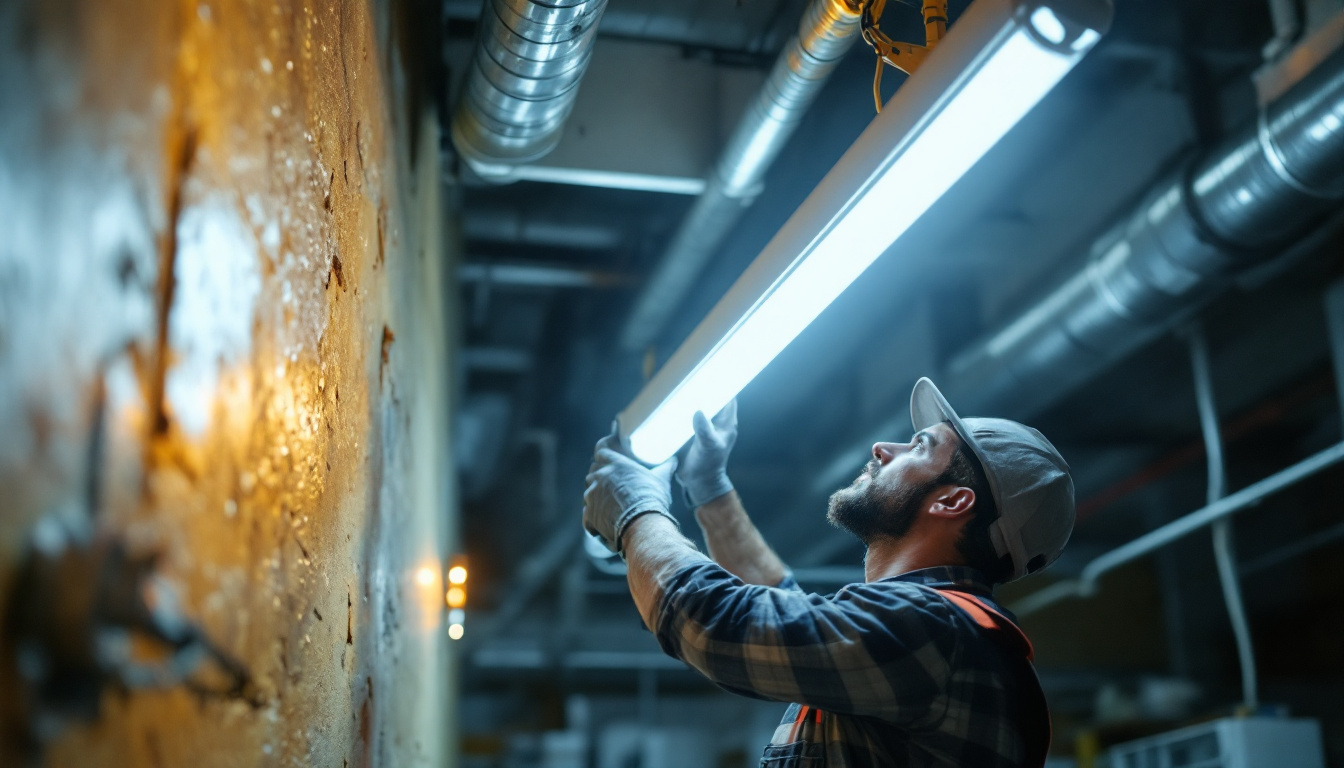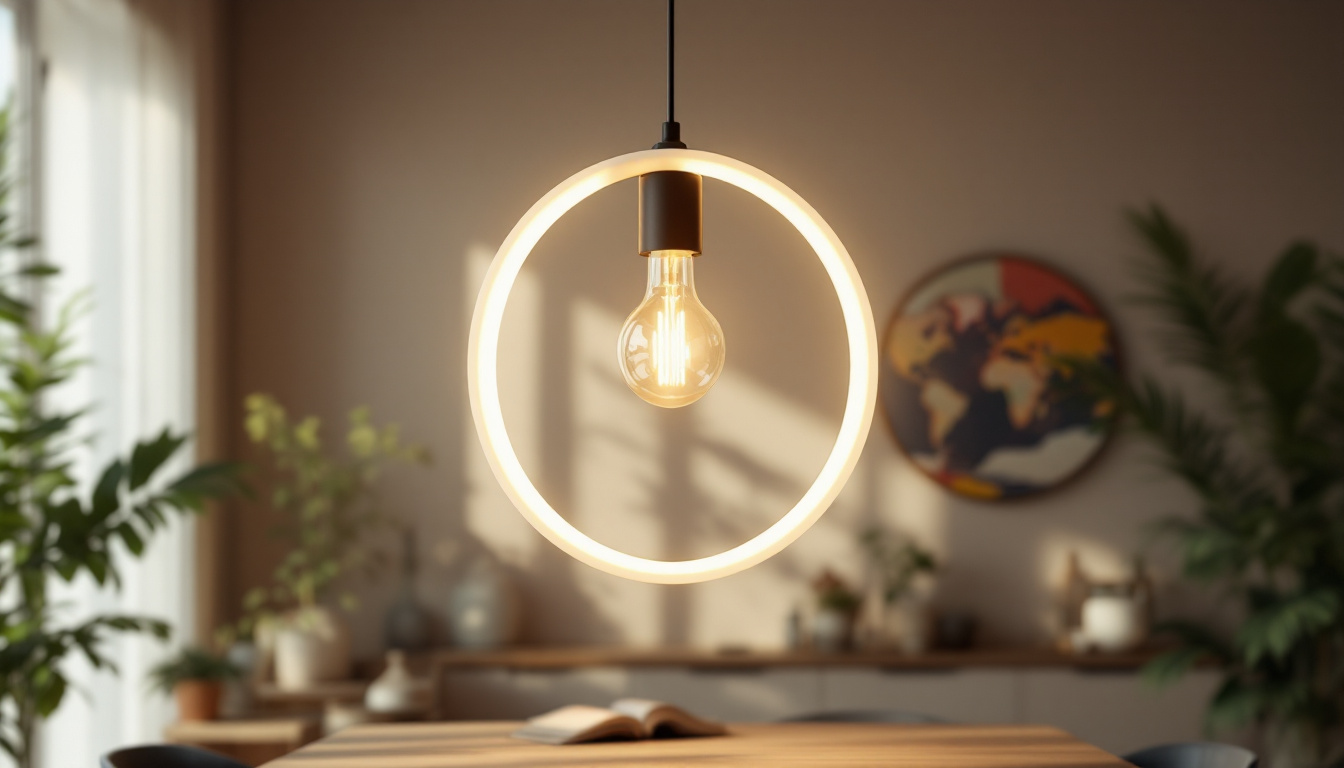
As the demand for energy-efficient lighting solutions continues to grow, many lighting contractors are finding themselves at the forefront of a significant transition: replacing traditional fluorescent tubes with LED lights. This shift not only aligns with sustainability goals but also offers numerous benefits for both contractors and their clients. This article provides expert advice on navigating this change effectively.
LED lights have emerged as a popular alternative to fluorescent tubes for several compelling reasons. Understanding these benefits is crucial for lighting contractors aiming to provide the best solutions for their clients.
One of the most significant advantages of LED lighting is its energy efficiency. LED lights consume considerably less energy compared to fluorescent tubes, often using up to 75% less electricity. This reduction not only lowers utility bills but also contributes to a smaller carbon footprint, making it an attractive option for environmentally conscious clients. Furthermore, as energy costs continue to rise, the financial benefits of switching to LED lighting become even more pronounced, allowing businesses to allocate savings to other critical areas of operation.
LED lights have a much longer lifespan than fluorescent tubes, typically lasting up to 25,000 hours or more. This longevity means fewer replacements and reduced maintenance costs over time. For contractors, this translates to less frequent service calls and a more satisfied customer base. Additionally, the durability of LED fixtures makes them less susceptible to breakage, which is particularly advantageous in high-traffic areas or environments where traditional bulbs might be at risk of damage. This resilience not only enhances the overall reliability of the lighting system but also instills confidence in clients who are looking for long-term solutions.
LED technology has advanced significantly, resulting in improved light quality. Unlike fluorescent lights, which can produce harsh, flickering light, LEDs provide a more consistent and pleasant illumination. This quality is particularly important in settings such as offices, retail spaces, and healthcare facilities, where lighting can impact mood and productivity. Moreover, LEDs are available in a wide range of color temperatures, allowing for greater customization to suit specific environments. For instance, warmer tones can create a cozy atmosphere in restaurants, while cooler tones can enhance focus and alertness in workspaces. This versatility not only meets aesthetic preferences but also supports the functional needs of diverse applications.
While the benefits of LED lighting are clear, several considerations must be taken into account when replacing fluorescent tubes. Understanding these factors can help contractors execute a smooth transition.
Before making the switch, it is essential to assess the compatibility of existing fixtures with LED tubes. Some fluorescent fixtures may require retrofitting to accommodate LED technology. Contractors should evaluate whether to use direct replacement LED tubes, which fit into existing fixtures, or to recommend a complete fixture replacement for optimal performance. In addition, it is important to consider the age and condition of the existing fixtures. Older fixtures may not only be less efficient but could also pose safety risks if they are not in good working order. A thorough inspection can help identify any potential issues that might arise during the installation process.
Fluorescent tubes operate with a ballast, which regulates the current to the lamps. When replacing these tubes with LEDs, contractors must determine whether the existing ballast is compatible. In some cases, it may be necessary to bypass or remove the ballast altogether to ensure proper functionality of the LED tubes. This step requires careful planning and execution to avoid issues during installation. Furthermore, contractors should be aware of the different types of ballasts—such as electronic and magnetic—and how they interact with LED technology. Understanding these nuances can prevent costly mistakes and ensure a seamless transition to LED lighting.
LEDs come in various color temperatures, measured in Kelvin (K). It is crucial for contractors to understand the desired ambiance of the space when selecting LED replacements. For example, a cooler temperature (5000K) may be suitable for task-oriented areas, while a warmer temperature (3000K) is often preferred in residential settings. Providing clients with options can enhance satisfaction and ensure the lighting meets their needs. Additionally, contractors should consider the lumens output of the LED tubes, as this will affect the overall brightness of the space. It’s beneficial to conduct a lighting audit to determine the required lumens for different areas, ensuring that the new LED installations provide adequate illumination without being overly harsh or dim.
Proper installation is key to maximizing the benefits of LED lighting. Adhering to best practices can help contractors deliver high-quality results that meet client expectations.
Before installation, contractors should carefully plan the layout of the lighting. This includes determining the spacing of fixtures to ensure even light distribution. A well-thought-out layout not only enhances the aesthetic appeal but also improves functionality in the space. Factors such as the height of ceilings, the color of walls, and the intended use of each area should be taken into account. For instance, in a workspace, brighter lighting may be necessary to reduce eye strain, while softer lighting may be more appropriate in relaxation areas. Additionally, utilizing lighting design software can help visualize the final outcome and make adjustments before installation begins.
Investing in high-quality LED products is essential for long-term satisfaction. Contractors should choose reputable brands that offer reliable warranties and performance guarantees. This not only protects the contractor’s reputation but also instills confidence in clients regarding the durability of the installation. Furthermore, selecting energy-efficient products can lead to significant cost savings for clients over time, as they reduce electricity bills and maintenance costs. It’s also beneficial to stay informed about the latest advancements in LED technology, such as smart lighting solutions that allow for remote control and automation, which can add value to the installation.
After installation, thorough testing is crucial. Contractors should verify that all fixtures are functioning correctly and make any necessary adjustments to optimize light levels. This step is vital to ensure that the lighting meets the client’s expectations and complies with any relevant regulations. During this phase, it’s also important to gather feedback from the client, as their input can provide insights into how the lighting performs in real-world conditions. Additionally, documenting the testing process can serve as a valuable reference for future projects and help in troubleshooting any issues that may arise later. Regular follow-up visits can also be beneficial to ensure ongoing satisfaction and to address any adjustments that may be needed as the space is used over time.
As lighting contractors, it is essential to educate clients about the advantages of switching to LED lighting. Effective communication can help clients make informed decisions and appreciate the value of their investment.
While the initial cost of LED lights may be higher than fluorescent tubes, the long-term savings are substantial. Contractors should provide clients with a clear breakdown of potential energy savings and reduced maintenance costs over time. This information can help clients understand the financial benefits of the switch.
Many clients are increasingly concerned about their environmental footprint. Highlighting the eco-friendly aspects of LED lighting, such as lower energy consumption and reduced waste, can resonate with environmentally conscious customers. This alignment with sustainability goals can also enhance the contractor’s brand image.
Despite the numerous benefits of LED lighting, some clients may have concerns that need to be addressed. Understanding these common concerns allows contractors to provide reassurance and solutions.
One of the most common concerns is the initial investment required for LED lighting. Contractors should be prepared to explain the long-term savings and return on investment. Providing case studies or examples of previous projects can help illustrate the financial benefits of making the switch.
Some clients may worry that LED lights won’t provide the same light quality as fluorescent tubes. Contractors can alleviate these concerns by showcasing the advancements in LED technology that have led to improved color rendering and consistency. Allowing clients to see LED lights in action can also help dispel any doubts.
The lighting industry is constantly evolving, with new technologies and trends emerging regularly. For contractors, staying informed is essential to remain competitive and provide the best solutions for clients.
Participating in workshops, webinars, and industry conferences can help lighting contractors stay up-to-date with the latest advancements in LED technology. Many manufacturers offer training sessions that cover installation techniques, product features, and troubleshooting tips. This knowledge can enhance the contractor’s skill set and confidence in recommending LED solutions.
Building relationships with other lighting professionals can provide valuable insights and knowledge sharing. Joining industry associations or online forums can facilitate networking opportunities and allow contractors to stay informed about best practices and emerging trends.
Replacing fluorescent tubes with LED lights presents a significant opportunity for lighting contractors to enhance their service offerings and meet the growing demand for energy-efficient solutions. By understanding the benefits of LED lighting, addressing client concerns, and staying informed about industry trends, contractors can position themselves as trusted experts in the field. Embracing this transition not only benefits clients but also contributes to a more sustainable future for the lighting industry.
Ready to take the next step in providing energy-efficient lighting solutions? At LumenWholesale, we support lighting contractors like you with high-quality, specification-grade LED products at unbeatable wholesale prices. Our extensive selection is designed to meet the highest industry standards, ensuring your projects shine with reliability and performance. Plus, with free shipping on bulk orders, you can trust that you’re getting premium lighting at the best value—without any hidden fees. Make the switch to LED with confidence and convenience. Visit LumenWholesale today and discover how we can illuminate your success.

Discover essential insights for lighting contractors on hazardous location lighting.

Discover why CMH grow lights are essential for thriving indoor gardens and lighting projects.

Discover how choosing the right bulb base can enhance efficiency for lighting contractors.

Discover essential insights into architectural round pendant lights tailored for lighting contractors.